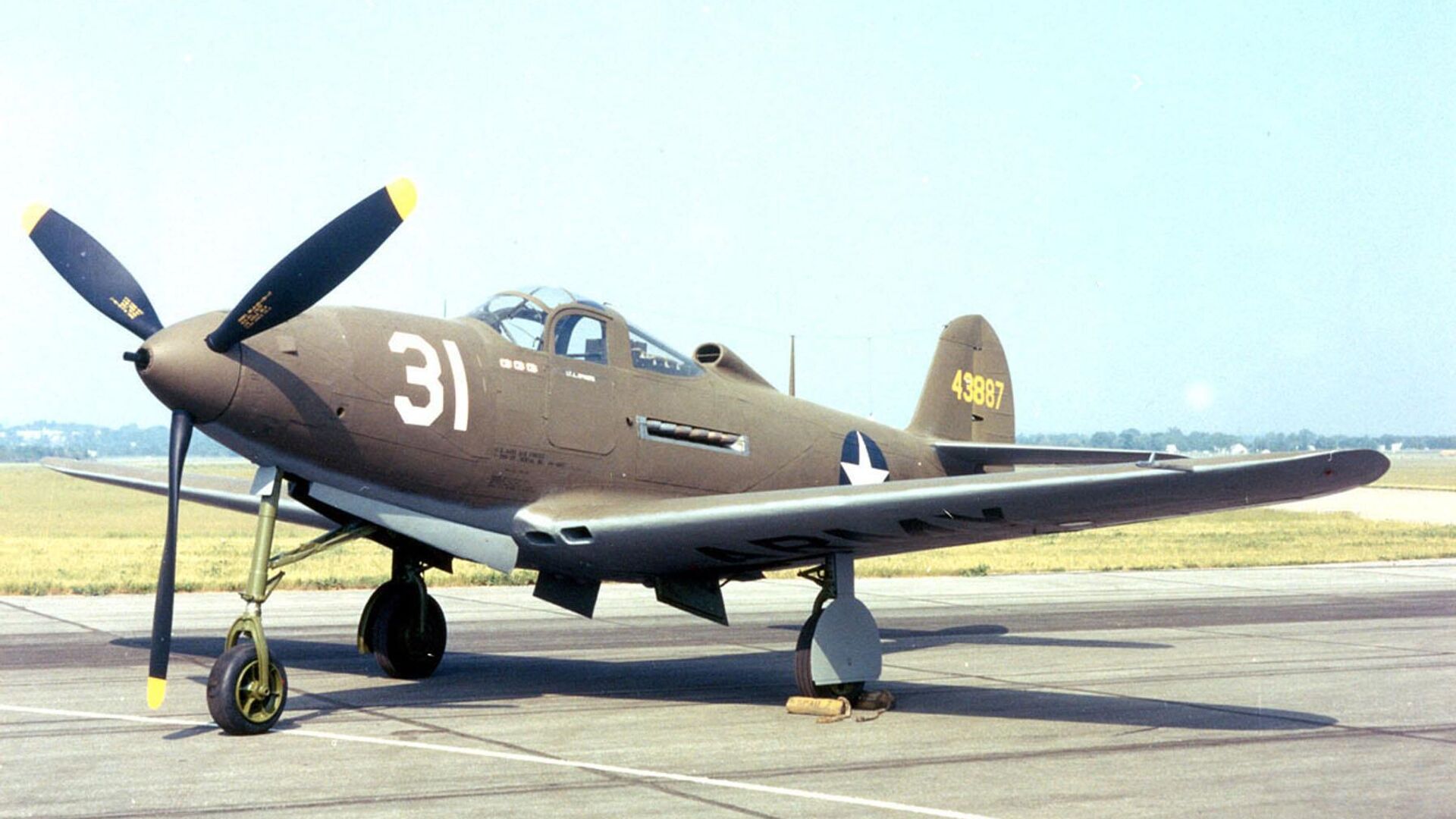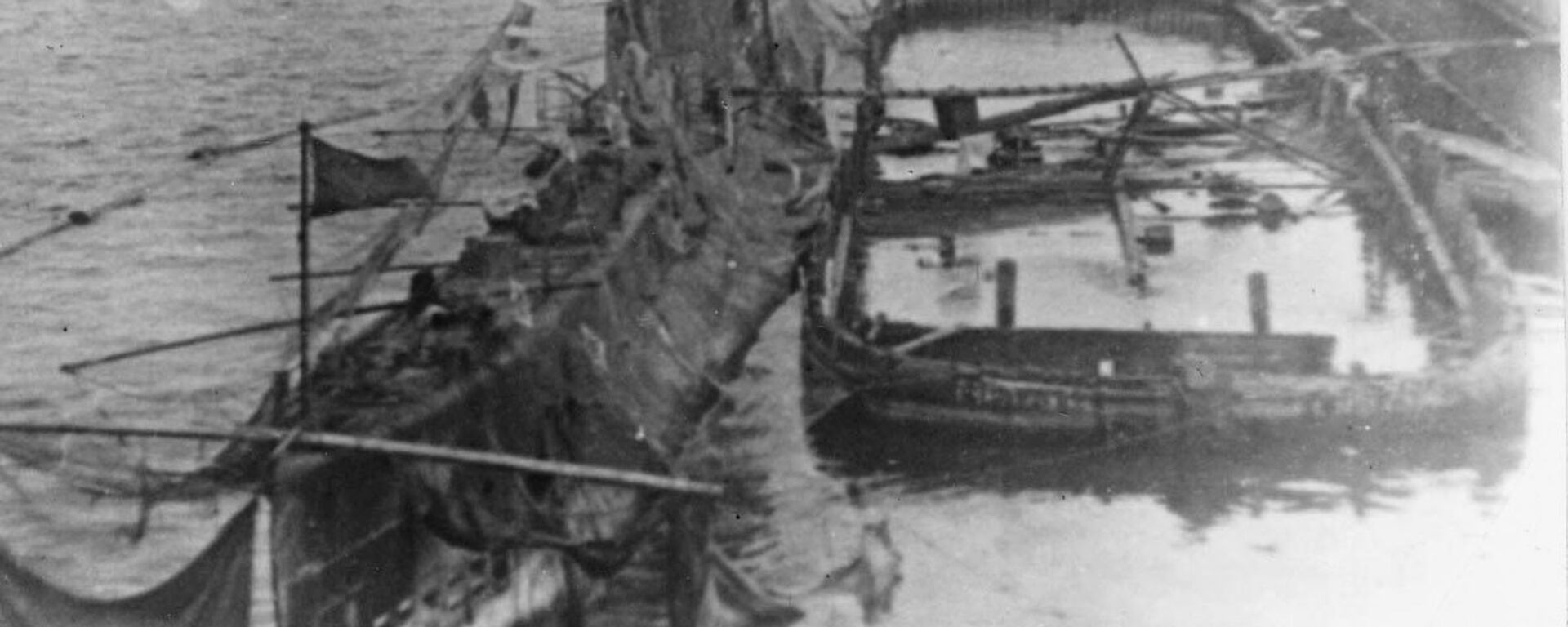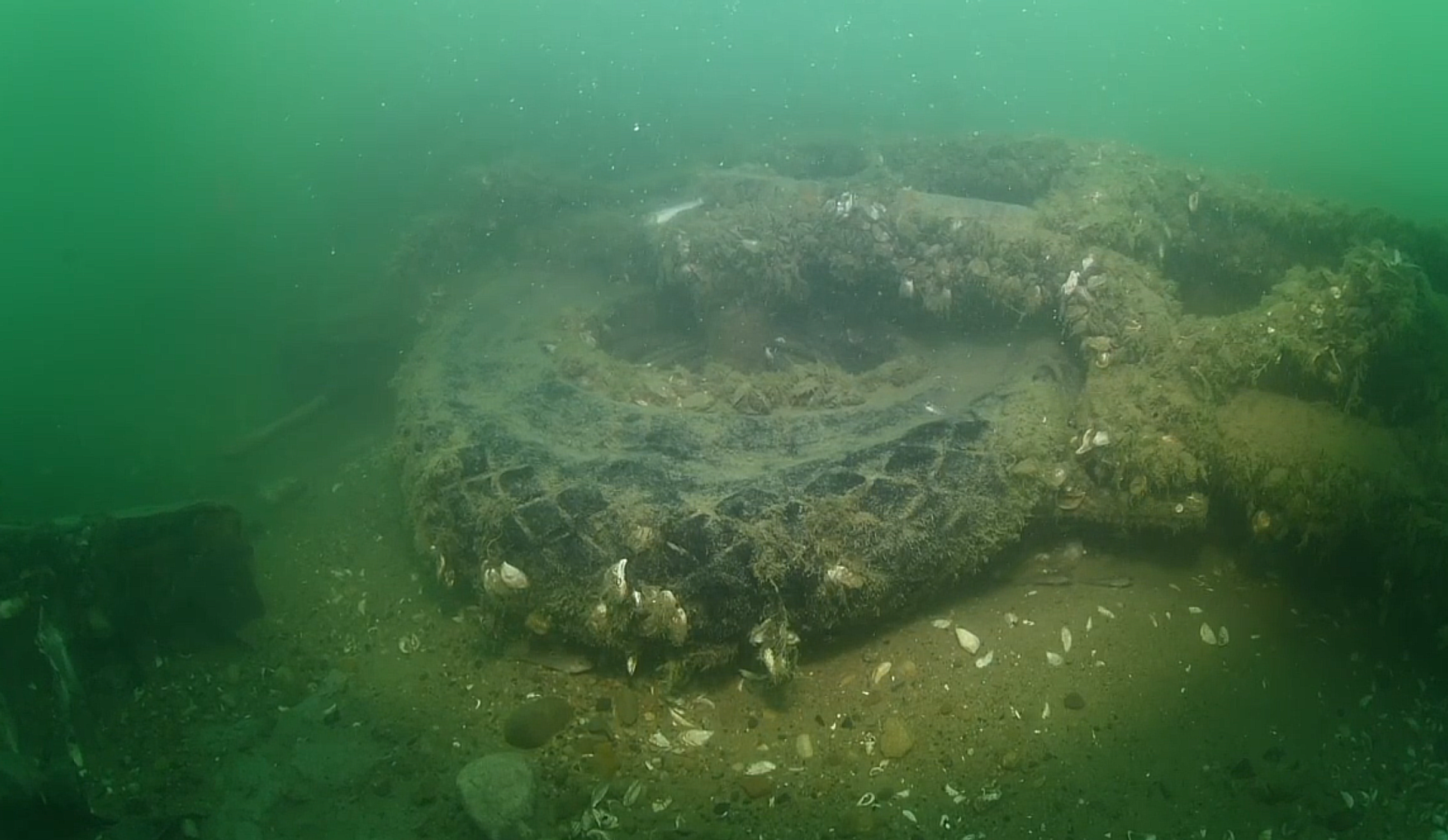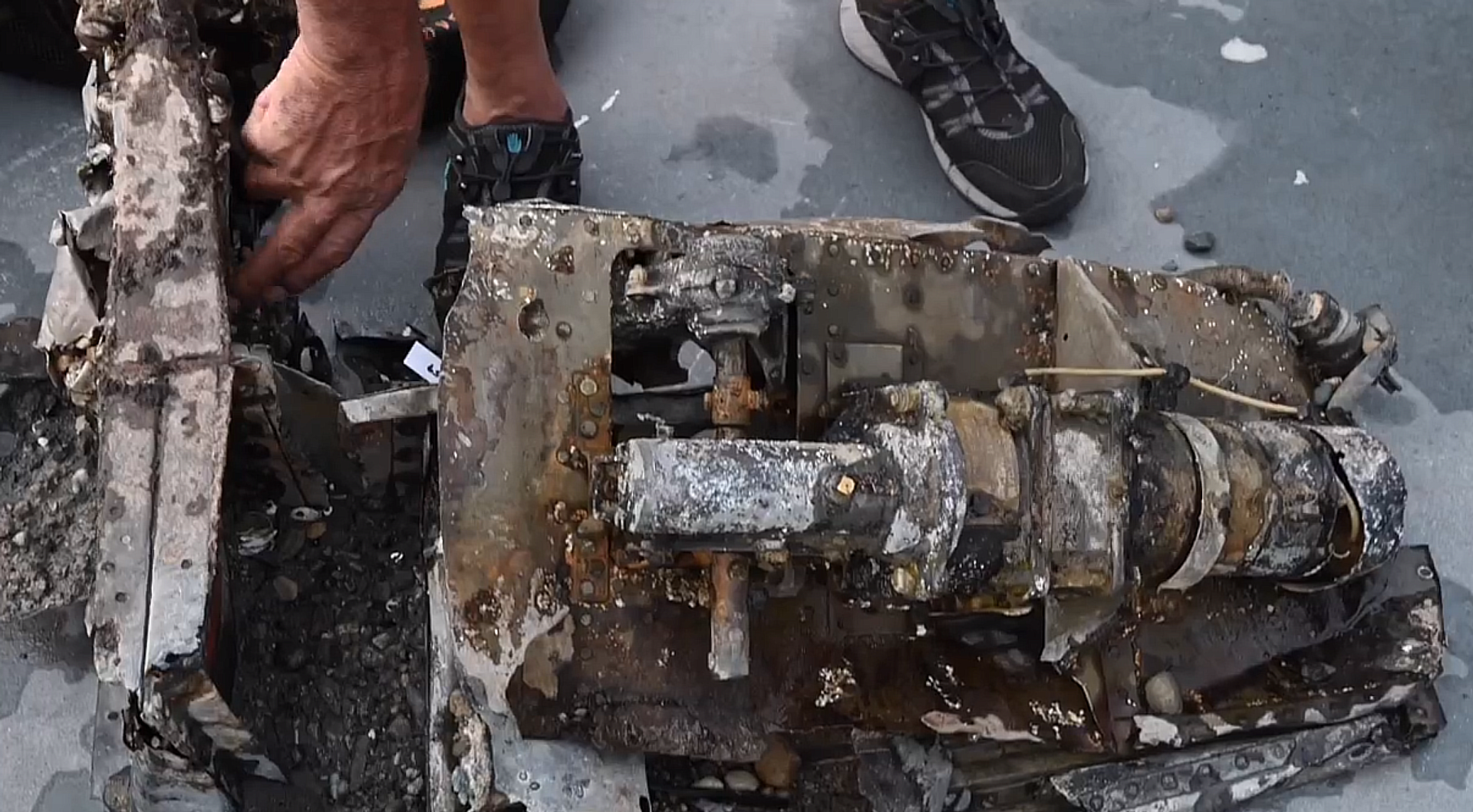https://sputnikglobe.com/20230818/photos-lake-huron-divers-recover-pieces-of-crashed-ww2-plane-flown-by-tuskegee-airman-1112717609.html
Photos: Lake Huron Divers Recover Pieces of WW2 Plane Flown by Tuskegee Airman
Photos: Lake Huron Divers Recover Pieces of WW2 Plane Flown by Tuskegee Airman
Sputnik International
A piece of US aviation history is slowly being recovered from the bottom of Lake Huron on the US-Canada border, after which it will be restored and placed in a... 18.08.2023, Sputnik International
2023-08-18T21:53+0000
2023-08-18T21:53+0000
2023-08-18T21:57+0000
americas
lake huron
african americans
tuskegee university
airmen
recovery
fighter aircraft
https://cdn1.img.sputnikglobe.com/img/07e7/08/12/1112717452_0:141:1801:1154_1920x0_80_0_0_c65dab8c2cefb116f0622e93d00ace34.jpg
On April 11, 1944, 2nd Lt. Frank Moody was flying his Bell P-39 Airacobra fighter aircraft on a training mission over Lake Huron. His squadron, the all-African American Tuskegee Airmen, was based in nearby Selfridge Air Base in Michigan, prior to deployment in Europe. However, an error in the synchronization gear, which should have ensured his machine gun only fired when his airplane’s propeller wasn’t in the way, resulted in his propeller getting shredded when he pulled the trigger. The plane crashed into the lake, and Moody’s body was discovered several months later.The plane’s wreckage was scattered along the lakebed, where it sat undisturbed until its discovery in 2014. Now, divers are working to slowly lift to the surface as much of the aircraft as they can.“As we prepare for these major lifts, we’re finding all these small pieces. When we’re done we’re going to have a complete understanding where every single piece came from,” she said.Photos shared with local media show the engine totally overgrown with freshwater mussels as historians placed it into a cleansing solution to soak.However, the recovery effort is extremely slow, as the aircraft is scattered over a large area of the lakebed. Once restored, the plane’s parts will one day be exhibited at the Tuskegee Airmen National Historical Museum at the Coleman A. Young International Airport in Detroit.The Tuskegee Airmen were the nation’s first all-Black fighter squadron, which served separately from white pilots due to the US military’s racial segregation policy that mirrored the segregation in US society at the time. Despite the discrimination they faced, the “Red Tails,” as they were called due to the paint designs on their planes, served valiantly in the war, with US President George W. Bush awarding the unit the Congressional Gold Medal in 2007."That story is being told, and has been told, but what we haven’t heard are about the accidents in training that the airmen suffered. This is an exhibit that’s when it's conserved can tell the story of African Americans - the complete story - from training, combat then what they did after the war.”More than 1.5 million Black Americans served in the US Armed Forces in World War 2, and their experience fighting fascism in Europe and the Pacific, and living in countries that did not segregate white and Black people like in the United States, motivated many Black service members to fight for an end to Jim Crow laws after they returned home from the war. The US military was desegregated in 1948, three years after the war ended, but desegregation didn’t come to wider US society until the 1950s, with discriminatory laws being banned altogether in 1965.Another 14 Tuskegee Airmen were killed during training in Michigan, including four other pilots lost in Lake Huron and one in the St. Clair River, according to the Michigan Department of Natural Resources.
https://sputnikglobe.com/20160504/estonia-sub-heroes-1039073067.html
americas
lake huron
Sputnik International
feedback@sputniknews.com
+74956456601
MIA „Rossiya Segodnya“
2023
News
en_EN
Sputnik International
feedback@sputniknews.com
+74956456601
MIA „Rossiya Segodnya“
Sputnik International
feedback@sputniknews.com
+74956456601
MIA „Rossiya Segodnya“
lake huron, african americans, tuskegee university, airmen, recovery, fighter aircraft
lake huron, african americans, tuskegee university, airmen, recovery, fighter aircraft
Photos: Lake Huron Divers Recover Pieces of WW2 Plane Flown by Tuskegee Airman
21:53 GMT 18.08.2023 (Updated: 21:57 GMT 18.08.2023) A piece of US aviation history is slowly being recovered from the bottom of Lake Huron on the US-Canada border, after which it will be restored and placed in a museum.
On April 11, 1944, 2nd Lt. Frank Moody was flying his Bell P-39 Airacobra fighter aircraft on a training mission over Lake Huron. His squadron, the all-African American Tuskegee Airmen, was based in nearby Selfridge Air Base in Michigan, prior to deployment in Europe.
However, an error in the synchronization gear, which should have ensured his machine gun only fired when his airplane’s propeller wasn’t in the way, resulted in his propeller getting shredded when he pulled the trigger. The plane crashed into the lake, and Moody’s body was discovered several months later.
The plane’s wreckage was scattered along the lakebed, where it sat undisturbed until its discovery in 2014. Now, divers are working to slowly lift to the surface as much of the aircraft as they can.
“We’re doing some finalizing of mapping things in terms of what all is there,” Carrie Sowden, archeological and research director at the National Museum of the Great Lakes in Toledo, Ohio, told US media.
“As we prepare for these major lifts, we’re finding all these small pieces. When we’re done we’re going to have a complete understanding where every single piece came from,” she said.
So far they’ve lifted some of the minor pieces, such as the propeller and machine gun, but their recent lift was one of their biggest yet: the P-39’s 1,200-pound engine, which was unusually placed behind the cockpit, and which came to rest 30 feet below the lake’s surface.
Photos shared with local media show the engine totally overgrown with freshwater mussels as historians placed it into a cleansing solution to soak.
However, the recovery effort is extremely slow, as the aircraft is scattered over a large area of the lakebed. Once restored, the plane’s parts will one day be exhibited at the Tuskegee Airmen National Historical Museum at the Coleman A. Young International Airport in Detroit.
The Tuskegee Airmen were the nation’s first all-Black fighter squadron, which served separately from white pilots due to the US military’s racial segregation policy that mirrored the segregation in US society at the time. Despite the discrimination they faced, the “Red Tails,” as they were called due to the paint designs on their planes, served valiantly in the war, with US President George W. Bush awarding the unit the Congressional Gold Medal in 2007.
“Tuskegee airmen are known for their valor and excellence in fighting the Germans in the air war over Germany in World War II,” the museum's president and chief executive, Brian Smith, told US media.
"That story is being told, and has been told, but what we haven’t heard are about the accidents in training that the airmen suffered. This is an exhibit that’s when it's conserved can tell the story of African Americans - the complete story - from training, combat then what they did after the war.”
More than 1.5 million Black Americans served in the US Armed Forces in World War 2, and their experience fighting fascism in Europe and the Pacific, and living in countries that did not segregate white and Black people like in the United States, motivated many Black service members to fight for an end to Jim Crow laws after they returned home from the war.
The US military was desegregated in 1948, three years after the war ended, but desegregation didn’t come to wider US society until the 1950s, with discriminatory laws being banned altogether in 1965.
Bell built more than 9,500 of the Airacobras, but they weren’t much used by the Western Allies, who needed a higher-flying interceptor than the P-39, which lacked a turbo-supercharger, could reach. However, the Soviet Union received P-39s in enormous numbers, deploying them on the Eastern Front to provide highly effective low-altitude air cover for advancing Red Army forces.
Another 14 Tuskegee Airmen were killed during training in Michigan, including four other pilots lost in Lake Huron and one in the St. Clair River, according to the Michigan Department of Natural Resources.






